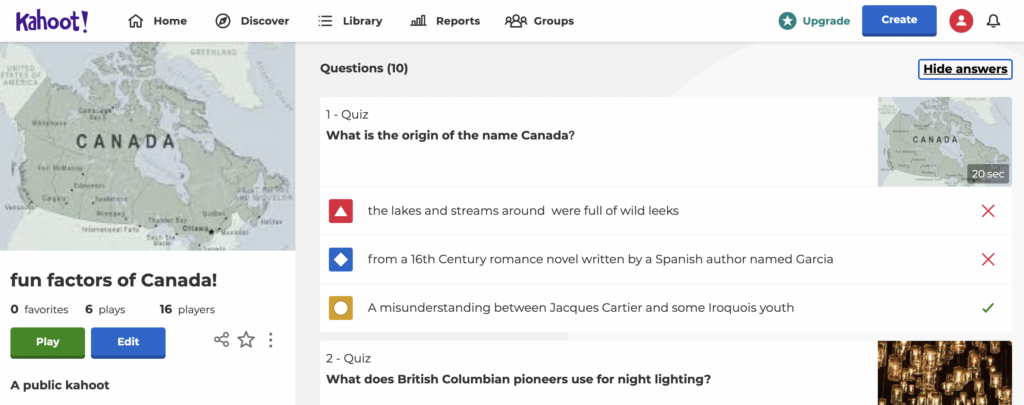Made by Yiyang Wei & Zhiwen Zheng
Topic
Top Ten Steps to Studying
Content
In this workshop, we are going to talk about the top ten steps to studying, and the topic focuses on how to study smarter, not longer. Many students feel that they have spent a lot of time studying but have not made much progress in their grades. Some students begin to hate their studies and give up on it because the effort they put in is not proportional to the results they get. The topic of the workshop is to help students who haven’t found the right ways to study, and students who already have the right ways to study will also benefit from it.
There are ten useful steps on studying, we will cover the following steps:
- Space out your studying
- Practice, practice, practice!
- Don’t just reread books and notes
- Test yourself
- Learn from mistakes
- Mix it up
- Use pictures
- Find examples
- Dig deeper
- Make a plan — and stick to it
Learning Objectives
By the end of this course, students will be able to:
- Know how to study efficiently with 10 useful studying steps
- Know how to manage study schedule
- Understand that mistakes are acceptable and learn from them
- Use pictures and charts to help with learning and understanding effectively
Media
Multi-media presentation: PowerPoint
Kahoot
Instruction Process
To help students improve their learning efficiency and learn smarter. We created a PowerPoint to help students understand ten ways to support learning. First, make a statement. Tell the students the background. Then start, use the game method (Kahoot) to enhance the understanding of the current situation of the students, which will help make targeted suggestions later. After that, use the descriptive features of PowerPoint to make a deeper comprehension of the ten steps to help learn. Finally, it is a test of students’ absorption of content. We started another round of Kahoot quiz to enhance memory during the game and quiz. And to test students in a non-scoring system.
Discussion of Learning Theories
Coherence principle stated that people learn better when extraneous material is excluded rather than included (Mayer, 2017). Through interactive behavior and multiple senses to convey and express information, the audience can not only see, hear but also touch, feel, smell and interact with it (Schwier & Misanchuk, 1993). That is why I used the multi-media presentation as the most intuitive way to tell students about the theme of this design. In using PowerPoint to tell, arranging quizzes like Kahoot helps avoid the death problem of PowerPoint: reading dense PowerPoint slides is inefficient learning.
Constructivist theory points out that teacher guides are the source of students’ learning. Therefore, under the theory of this, it is very common to form a teaching practice of asking questions, and then inviting students to answer and solve the problems in their own way. The presentation designed this time will also be combined with the game Kahoot to ask students questions and guide them to think about how to improve their learning efficiency.
Game is a learning experience in game-based learning, and in gamification, game elements are added to traditional teaching methods. Quizzes can be regarded as an example of gamification, so I used Kahoot for the instruction design this time. This graphical, time-limited question-and-answer game has to a large extent, stimulated students’ interest and motivation to learn related content in the classroom. Initially, the theme of this time is to hope that students will master efficient learning methods. This can be combined with the use of images in the content.
Evaluation is the central part of the teaching process. Because the fundamental purpose of the evaluation is to promote work and promote development, any evaluation is formative. However, this guidance plan does not have a specific evaluation system. However, I want to emphasize that the last link, Kahoot, is a retrospective. This kind of review is similar to the evaluation, and the purpose is to test the student’s mastery of knowledge. Because this instruction is already to help students learn better, not specific knowledge, the evaluation knowledge we have learned is used in this design.
References
Kowalski, K (September 09, 2020). Top 10 tips on how to study smarter, not longer. Science News for Students. https://www.sciencenewsforstudents.org/article/top-10-tips-study-smart er-not-longer-study-skills
Mayer, R. E. (2017). Using multimedia for e‐learning. Journal of Computer Assisted Learning, 33(5), 403-423.
Truex, L (January 04, 2021). How to Create an Action Plan to Achieve Your Home Business Goals. The balance small business. https://www.thebalancesmb.com/how-to-create-an-action-plan-to-achie ve-your-goals-1794129
Schwier, R., & Misanchuk, E. R. (1993). Interactive multimedia instruction. Educational Technology.
Yager, R. E. (1991). The constructivist learning model. The science teacher, 58(6), 52.
